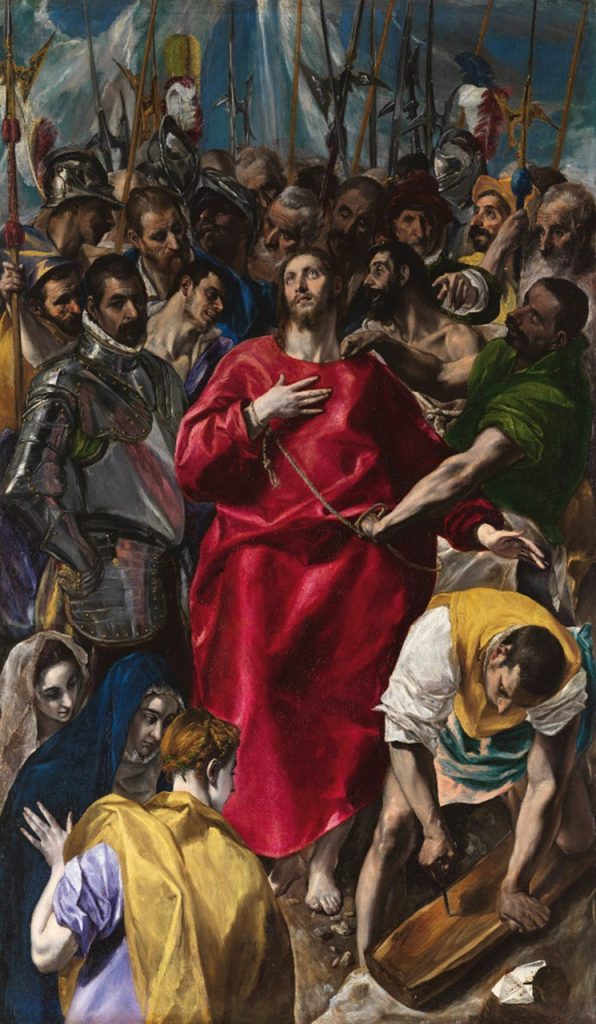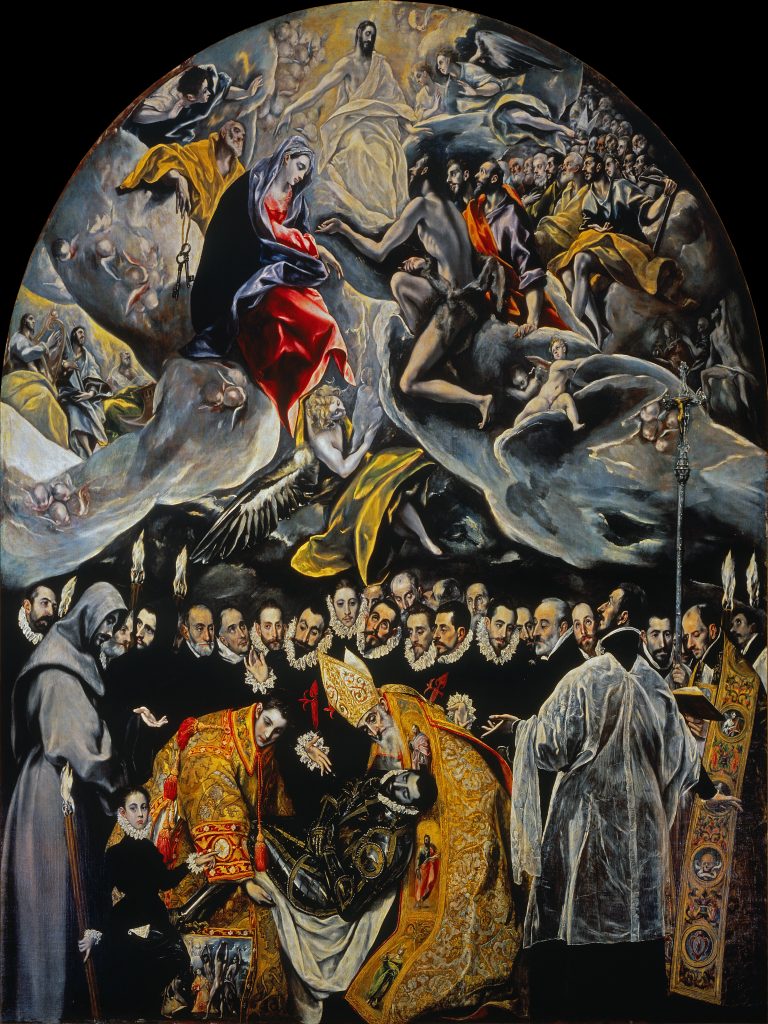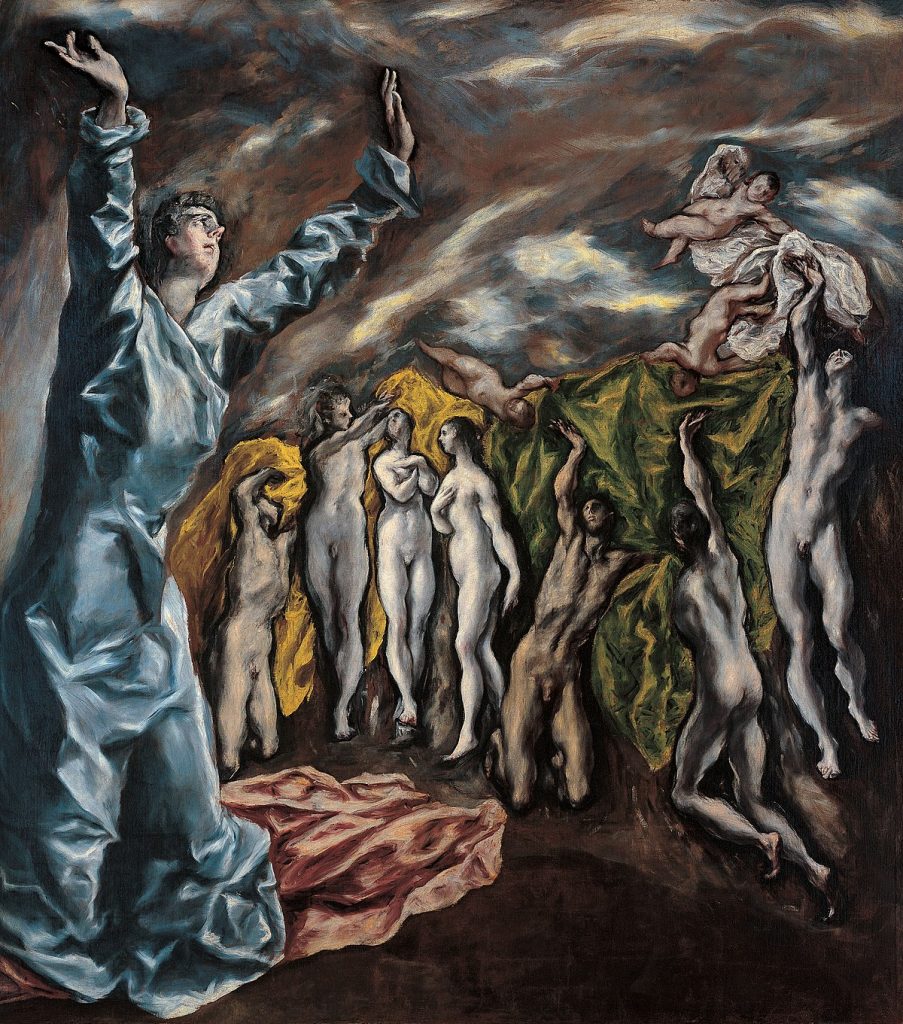
El Expolio
Domênikos Theorokópoukos, also known as “El Greco” is one of the main artists in the sixteenth century. He was born in 1541 in Creta (Greece), however, he lived for years in Spain, and he died in 1614 in Toledo.
His works are characterized by using a dark and pale palette, although sometimes he highlights relevant elements with more vibrant colors. For example, Jesus with his bright red clothing in the painting entitled “El Expolio”.
El Greco painted pieces on religious themes, however, he also painted portraits, self-portraits, and some landscapes. He did not give so much importance to backgrounds, that is why he usually painted a dark background in portraits. However, what he did give importance to was light. He was interested in exploring different lighting effects. With this high light contrast, he intended to represent divinity and spirituality.
When I look at paintings like “The Burial of the Count of Orgaz”, I find it admirable to be able to compose such complex structures, as it is not an easy task to achieve a balanced composition having so many elements and situations happening simultaneously. Additionally, I like the particular elongated anatomy of his figures, I feel that this makes his paintings look unique.

The Burial of the Count of Orgaz

El Soplón 
View of Toledo

Opening of the Fifth Seal
References
Wethey, H. E. (2021, April 3). El Greco. Encyclopedia Britannica. https://www.britannica.com/biography/El-Greco
Sobrón, I. (2018, February 9). Explica las características de la pintura de El Greco a través de sus obras más representativas. Slideshare. https://es.slideshare.net/ignaciosobron/explica-las-caractersticasde-la-pintura-de-elgreco-a-travsde-sus-obras-ms-representativas
Lasso, S (2019, November 01). El Greco: Pintor del siglo XVI. About español. https://www.aboutespanol.com/el-greco-3954367
